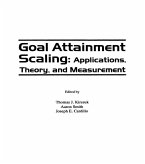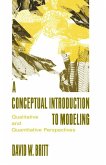This book bridges the gap between "quantitative" and "qualitative" modelers to reconcile the need to impose rigor and to understand the influence of context. Although there are many different uses for models, there is also the realistic possibility of doing credible research without their use. A critical reexamination of the assumptions used in quantitatively-oriented models, however, suggests ways to increase their effectiveness as organizers of both quantitative and qualitative data.
Students of methods in psychology, sociology, education, management, social work, and public health -- and their instructors -- are increasingly expected to become familiar with both quantitative and qualitative approaches. Unfortunately, they find few vehicles for communication regarding the implications of overlapping work between the two approaches. Using models as organizing devices for a better dialogue between assumptions and data might facilitate this communication process.
Dieser Download kann aus rechtlichen Gründen nur mit Rechnungsadresse in A, B, BG, CY, CZ, D, DK, EW, E, FIN, F, GR, HR, H, IRL, I, LT, L, LR, M, NL, PL, P, R, S, SLO, SK ausgeliefert werden.
Hinweis: Dieser Artikel kann nur an eine deutsche Lieferadresse ausgeliefert werden.









